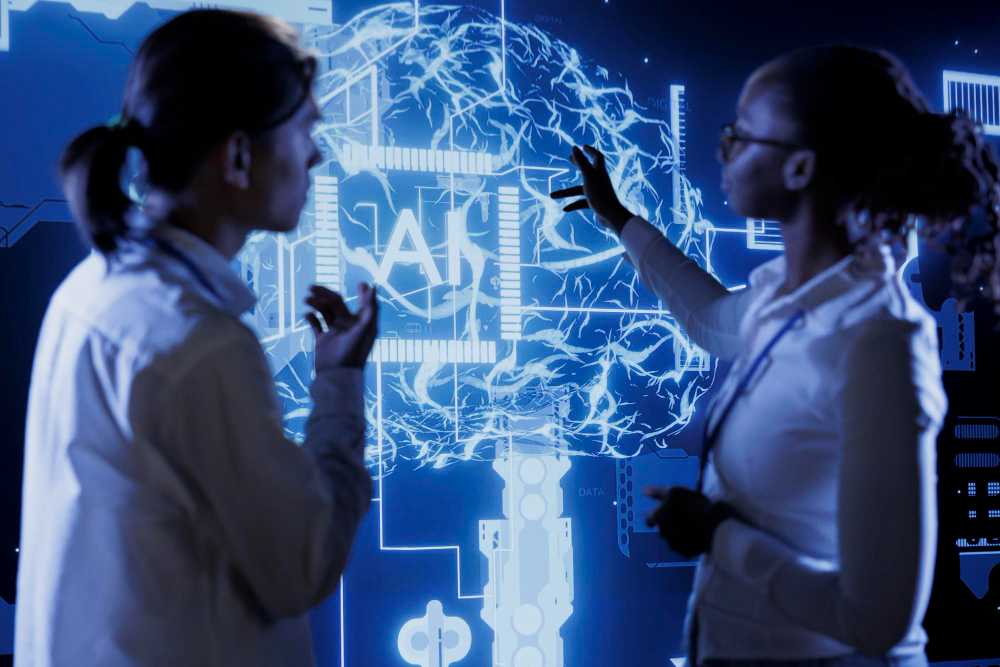The world of automation and testing is evolving rapidly, driven by advancements in artificial intelligence (AI) and machine learning. Businesses increasingly rely on automated solutions to enhance software testing, streamline operations, and reduce costs. But with these changes come questions: Can AI replace automation testers? How does AI perform in automation testing?
In this blog, we’ll explore automation and testing, highlighting its role in quality assurance, the impact of AI, and how businesses can leverage these advancements to stay competitive.
Automation and Testing: Redefining Quality Assurance for Businesses
1. What Is Automation and Manual Testing?
Testing is a critical part of software development, ensuring that applications function correctly and meet user expectations. Two main types of testing—manual and automation—serve different purposes in quality assurance.
1.1 Manual Testing
- Manual testing involves human effort to execute test cases, identify bugs, and ensure software functionality.
- Testers manually run scenarios, observe results, and document findings.
Advantages of Manual Testing:
- Human Insight: Testers can identify complex bugs that automation might miss.
- Flexibility: Adaptable to unstructured and exploratory tests.
- Cost-Effective for Small Projects: Ideal for low-budget, short-term projects.
Limitations of Manual Testing:
- Time-consuming and prone to human error.
- Inefficient for repetitive or large-scale testing.
1.2 Automation and Testing
- Automation and testing use tools and scripts to execute test cases without human intervention.
- It is highly effective for repetitive, large-scale, and regression tests.
Examples of Automation and Testing Tools:
- Selenium: An open-source tool for web application testing.
- Appium: Used for mobile app testing.
- Jenkins: Continuous integration for automated builds and testing.
Advantages of Automation Testing:
- Speed and Efficiency: Executes tests faster than manual testing.
- Reusability: Test scripts can be reused for multiple projects.
- Accuracy: Reduces human errors in testing.
Limitations of Automation Testing:
- Requires significant upfront investment in tools and expertise.
- Less effective for exploratory and user interface testing.
2. Can AI Replace Automation Testers?
With the rise of AI-powered testing tools, it’s a common question: Can AI completely replace automation testers? While AI has revolutionised software testing, introducing unprecedented speed and accuracy, the reality is more nuanced. AI enhances the capabilities of testers rather than rendering them obsolete. Let’s explore why.
2.1 How AI Is Transforming Testing
AI enhances automation testing by:
- Smart Test Case Generation: AI can generate test cases based on application behaviour and past data.
- Predictive Analytics: Identifies high-risk areas in the code to prioritise testing.
- Self-Healing Tests: Adjusts test scripts automatically when application changes break them.
While these features boost efficiency, they require skilled testers to manage, interpret, and fine-tune the results.
2.2 The Role of Testers in the Age of AI
AI complements testers rather than replacing them:
- Human Oversight: Testers provide the context and interpret results.
- Complex Scenarios: AI struggles with subjective and creative problem-solving.
2.3 Why AI Won’t Fully Replace Automation Testers
- Ethical Decisions: Testers make ethical judgements that AI cannot replicate.
- Understanding User Experience: Humans better assess usability and design.
- Adapting to New Contexts: Testers excel in testing new, unexplored features.
3. Can AI Do Automation Testing?
AI is revolutionising automation testing, transforming how software quality assurance (QA) is conducted. With AI-powered tools, testing has become faster, smarter, and more adaptive to changes in software environments. Let’s explore how AI enhances automation testing, its capabilities, benefits, and limitations.
3.1 AI in Automation Testing
AI-powered testing tools leverage machine learning to:
- Analyse Test Data: Detect patterns in test results to improve coverage.
- Generate Test Scripts: Create scripts based on user interactions and application logs.
- Perform Continuous Testing: Integrate with CI/CD pipelines for real-time testing.
Examples of AI-Driven Testing Tools:
- Testim: Automates test creation and maintenance using AI.
- Applitools: A visual testing tool powered by AI.
- Function: AI-driven platform for functional testing.
3.2 Benefits of AI in Automation Testing
- Improved Accuracy: AI reduces errors by analysing large datasets and making data-driven decisions.
- Efficiency: AI tools adapt quickly to changes, reducing maintenance time.
- Scalability: Handles large-scale testing with minimal human intervention.
3.3 Challenges of AI in Automation Testing
- Initial Setup: AI tools require training and setup time.
- Limited Creativity: AI cannot think creatively or contextually.
- Data Dependency: The quality of AI testing depends on the availability of accurate data.
4. Automation and Testing in Different Industries
Automation and testing are no longer confined to software development; they have expanded across various industries, transforming workflows and ensuring quality at every level. From healthcare to manufacturing, automation and testing play a pivotal role in enhancing efficiency, reducing costs, and improving outcomes.
4.1 Software Development
In software development, automation testing ensures applications are free of errors, meet user expectations, and maintain performance under different conditions.
Applications in Software Development:
- Continuous Integration/Continuous Deployment (CI/CD): Automated tests are integrated into CI/CD pipelines to detect issues during development, enabling faster and more reliable releases.
- Regression Testing: Automation ensures previously fixed bugs don’t reappear in updated versions.
- Performance Testing: Simulates real-world user traffic to ensure applications perform well under load.
Benefits:
- Faster testing cycles.
- Reduced costs in long-term projects.
- Improved software reliability and user satisfaction.
4.2 E-Commerce
E-commerce platforms rely on automated testing to ensure seamless user experiences and system reliability during high-traffic events.
Applications in E-Commerce:
- Load Testing: Ensures platforms can handle traffic spikes during sales events like Black Friday.
- Payment Gateway Testing: Automation validates payment systems for security and functionality.
- Search and Recommendation Algorithms: Testing ensures personalised recommendations function accurately.
Benefits:
- Enhanced user experience through error-free platforms.
- Reduced cart abandonment due to functional payment systems.
- Improved scalability for growing customer bases.
4.3 Healthcare
Automation and testing in healthcare are critical to ensuring the safety and efficacy of medical equipment, software, and procedures.
Applications in Healthcare:
- Medical Device Testing: Automated testing ensures devices such as pacemakers and diagnostic tools meet stringent safety standards.
- Electronic Health Records (EHR): Automation ensures EHR systems are secure, functional, and compliant with regulations like HIPAA.
- Telemedicine Platforms: Automated tests check for consistent performance and data security in remote patient care applications.
Benefits:
- Enhanced patient safety through error-free systems.
- Reduced manual intervention in medical device validation.
- Faster approval cycles for new medical technologies.
5. Key Takeaways for Businesses
Automation and testing have become indispensable for businesses aiming to stay competitive in today’s fast-evolving market. By leveraging these technologies, companies can improve efficiency, reduce costs, and ensure higher product and service quality. Here are the key takeaways for businesses looking to integrate automation and testing into their operations:
5.1 Why Businesses Should Invest in Automation and AI
- Enhanced Efficiency: Speeds up testing processes and reduces costs.
- Better Quality Assurance: Ensures consistent and reliable results.
- Scalability: Supports larger projects with fewer resources.
5.2 Steps to Implement Automation and AI Testing
- Identify Goals: Define what you want to achieve with automation.
- Choose Tools: Select tools like Selenium, Testim, or Functionize.
- Train Teams: Upskill your workforce to work alongside AI.
5.3 Foster Collaboration Between Humans and Machines
Rather than viewing automation and AI as replacements, see them as collaborators:
- Let AI handle repetitive, data-driven tasks.
- Enable your workforce to focus on creativity, strategy, and customer engagement.
5.4 Ensure Ethical and Secure Automation
As businesses adopt automation, ethical considerations and data security should be priorities:
- Implement transparent AI algorithms to avoid bias.
- Secure sensitive data in automated systems to maintain trust with customers and stakeholders.
- Comply with regulations like GDPR or CCPA when using automation in data processing
5.5 Long-Term Vision
Automation and testing are not one-time investments—they require ongoing adaptation and scaling:
- Plan for long-term growth by integrating automation into your core business strategy.
- Regularly evaluate the performance of your automated systems and make necessary adjustments.
5.6 Partner with Experts
If navigating automation and testing seems overwhelming, consider partnering with experts:
- Benefits of Partnerships:
-
- Access to specialised knowledge and tools.
- Faster implementation of automation systems.
- Ongoing support for troubleshooting and upgrades.
6. Future Trends in Automation and Testing
Automation and testing are continuously evolving, driven by advancements in artificial intelligence (AI), machine learning (ML), and industry demands for speed and precision. As businesses adopt these technologies to stay competitive, several key trends are shaping the future of automation and testing. These trends promise to revolutionise how we develop, deploy, and maintain software and systems.
6.1 AI-Driven Continuous Testing
What It Is: AI-driven continuous testing automates every stage of the testing lifecycle, providing real-time feedback during the software development process.
Applications:
- Integrated with CI/CD pipelines to automate testing at every stage of development.
- AI tools predict potential risks and prioritise test cases based on application changes.
Benefits:
- Accelerates development cycles without compromising quality.
- Ensures software is continuously monitored and updated.
6.2 Shift-Left Testing
What It Is: Shift-left testing involves moving evaluation earlier in the development cycle, emphasising collaboration between developers and testers from the beginning.
Applications:
- Developers use automated tools to test code as they write it.
- Teams identify and resolve issues earlier in the process.
Benefits:
- Reduces the cost and time of fixing bugs.
- Improves overall software quality.
6.3 Testing in DevOps and Agile
What It Is: Testing has become an integral part of DevOps and Agile methodologies, requiring automated solutions that align with iterative development cycles.
Applications:
- Automated regression testing ensures every iteration maintains quality.
- Tools like Selenium and Jenkins are integrated into DevOps workflows.
Benefits:
- Faster deployment cycles.
- Enhanced collaboration between teams.
6.4. Cloud-Based Testing
What It Is: Cloud-based testing leverages cloud infrastructure to perform tests, enabling scalability and global accessibility.
Applications:
- Run tests on multiple devices and browsers simultaneously using cloud services like AWS, Azure, or BrowserStack.
- Virtual environments simulate real-world scenarios.
Benefits:
- Reduces infrastructure costs.
- Enables remote and distributed teams to collaborate effectively.
7. The Role of Cloud-Based Testing in Remote Collaboration
The rise of remote work and distributed teams has made cloud-based testing an essential tool for modern businesses. As companies shift towards digital transformation, cloud-based testing offers a scalable, flexible, and cost-effective solution to ensure software quality across global teams.
Why Cloud-Based Testing Matters:
- Allows teams to test software remotely from any location.
- Provides scalable resources for testing large applications.
- Enables real-time collaboration between global teams.
Example: Netflix uses cloud-based AI testing to simulate server outages, ensuring its streaming platform never goes down.
Conclusion
Automation and testing are essential for modern businesses aiming to deliver high-quality software at speed. While manual testing retains value for certain tasks, automation testing, enhanced by AI, is the future of quality assurance. However, AI is not here to replace testers but to empower them with smarter tools and greater efficiency.
By embracing automation and AI-powered testing, businesses can stay competitive, reduce costs, and enhance their product offerings. The future of AI in automation and testing promises to be transformative—are you ready to make the leap?


